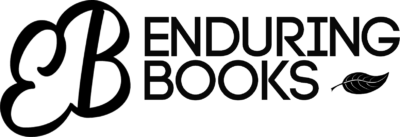The Method
This curriculum uses only public domain texts, preferably ones that are also widely available secondhand, from Ebay, Amazon, or your local Goodwill or grandmother. Texts that are free, not going to go out of business, tested by time, and often available in many accessible formats, such as audiobooks.
It teaches those texts and additional skills through workbooks, which are small and manageably-sized, formatted for cheap color printing or perfectly readable black-and-white printing. Each level has nine workbooks–theoretically one for each month of school.
The workbooks are designed for independence. There is no separate teacher manual (although there is an answer key). Assessment is mostly done through reflection and demonstrations rather than formal tests.
The Levels
The levels roughly correspond to modern grade levels. That doesn’t mean you need to match them up with your grades. The curriculum currently begins at level 2, but expects students to already be reading fluently, which many second-graders may not yet be.
It is absolutely all right to help a slow reader by taking turns reading. It is also absolutely all right to help a poor writer (by which I mean the mechanics of using a pencil) by scribing for them or adapting the curriculum for oral answers. Do what your child needs to grow and thrive.
Similarly, if it’s too easy? Feel free to bump your second grader up to level 3! Do what is best. There are always more books out there!
The Emphases
The goal is not merely to present a reading and test comprehension, or drill a list of vocabulary words. Rather, the goal is to teach the tools for self-learning. Thus, instead of a vocabulary list, for example, students are taught to pick out the words they don’t already know and “acquire” them, and to do this every time they come to a text.
Spelling and penmanship are included, but regarded as optional. The most likely formula for success in both of these are to continue in whatever method you used in earlier years! There are separate workbooks included without these two subjects. Spelling is based on The Practical Spelling-Book with Reading Lessons by T.H. Gallaudet and Horace Hooker, which is to say, the lessons attempt to teach some spelling rules (directly or by observation) and are mostly grouped phonetically, rather than being some random list of words.
Composition is another major emphasis of this curriculum–learning how to build sentences, paragraphs, and essays; different types of sentence structure; different types of reports; and scaffolding so that even the smallest learner can begin to take concrete steps toward good writing.
This curriculum is not explicitly Common Core aligned, but I do look at the standards and try to make sure that we are hitting the concepts of grammar, vocabulary, etc. that are specified there, as a minimum. We go far beyond the standards and are not constrained by them, but if you live in an area where homeschooling is easier if you can correlate it to the CCSS, you should be able to do that fairly easily.
The goal is to read real, quality literature. Old books. Old stories. The fabric of our shared history. Hence the emphasis on older textbooks, and, further, an increasing emphasis (as the levels get higher) on the “great books” and “great authors.” This is not twaddle.
The Author
Education: Really, my biggest qualification is that I’m a homeschool mom of eight and have simply been there, done that. 😉 That said, I have a B.A. in English Education and History.
Religion: I am trying to present workbooks in the spirit of the original textbooks–largely not wading too deeply into theological waters. I want to avoid generic, Gospel-empty moralism but also avoid making the workbooks unusable for secular homeschoolers. To that end, I’ve chosen stories that provoke discussion and the penmanship portion (which is optional and separate) is explicitly designed to bring the light of Scripture to bear–it is simply copywork of a Bible verse that is related to the story‘s moral. So we it is a two-step process: 1) reading literature, analyzing it, learning about it, and 2) considering it in the light of Scripture. The jump from 1 to 2 shouldn’t be hard for students to do independently and automatically, but regardless, that’s your cue as a parent to jump in and say, look, this is how the story we just read relates to the bigger Gospel picture.
I am myself generally skeptical of these “nondenominational Christian” curricula that obscure their authors’ religious background, so here you go — I affirm the 1644 London Baptist Confession of Faith. I love Jesus. I love the Gospel. I love the Church. I’m a Baptist who goes to a local Presbyterian church. I’m a tentative cessationist and a Young-Earth creationist. (I don’t think origins really come up in the reading curriculum, but I know it’s a hot-button issue for many homeschoolers.) I’m morally conservative, but politically I try to keep my citizen-of-heaven badge on top of my voter ID card.
I hope that answers your concerns about where the curriculum is coming from, but if I missed anything and you just can’t fathom using a curriculum written by someone with a different opinion on the proper name of the king in Esther, for instance, feel free to drop me a note and I’ll try to reassure you or warn you. 😀

